Repost: Special Report: The Truth Dies In Darkness; Dutroux
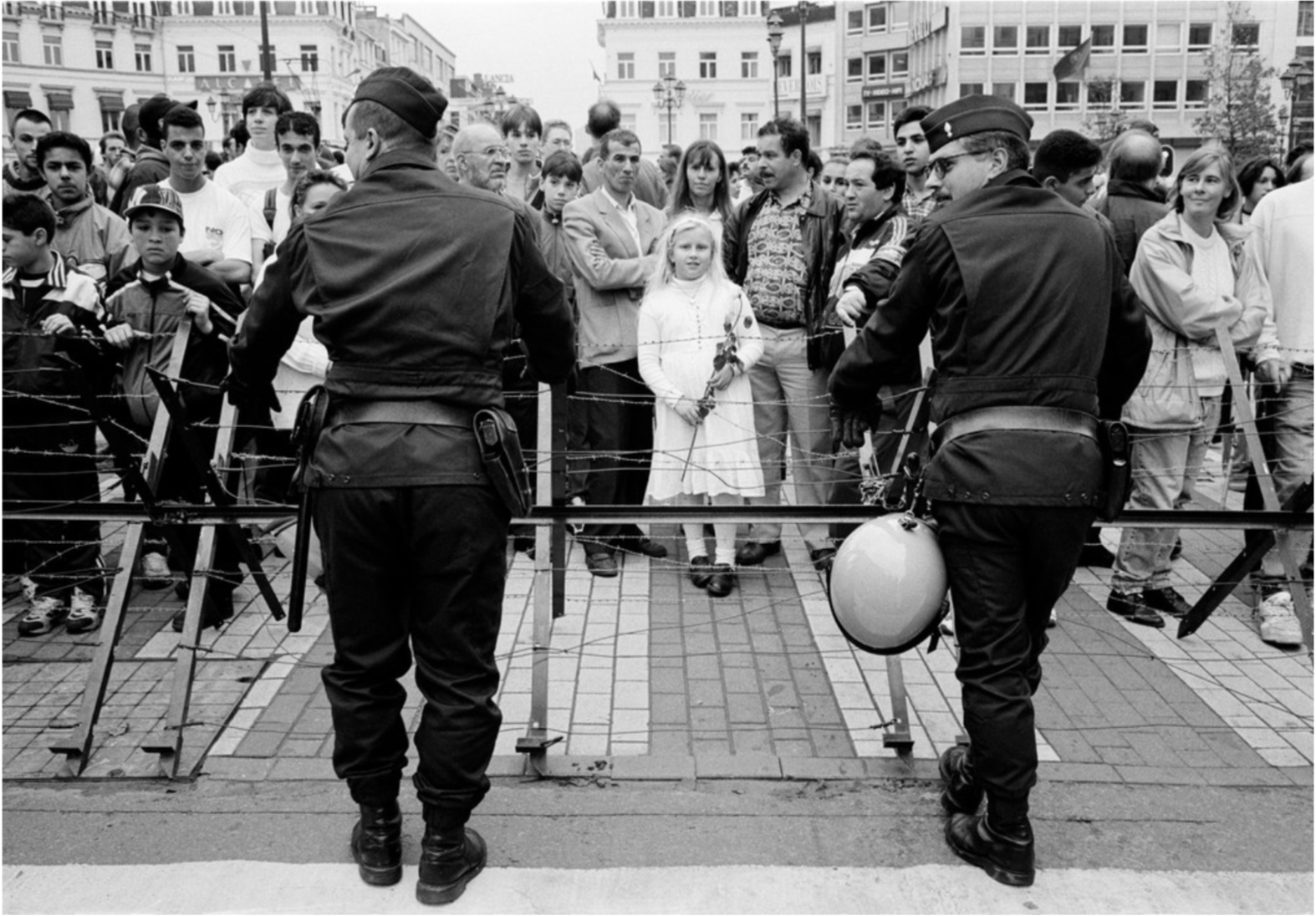
This article is my own intellectual property, and was published with Disobedient Mediain September 2017.
The Dutroux case is significant not only because of the deep depravity of the crimes committed and witnessed, but because the evidence that emerges from the case is validated twice over; First by legal proceedings, secondly by the publication of many of the prosecution's records by Wikileaks in 2009.
The Dutroux Affair was further validated by the extreme suppression of evidence in what many have called a coverup perpetrated by the Belgian establishment. The episode is a definitive example of the exposure of deep judicial and political corruption leading to widespread public distrust in the legitimacy of their institutions of government.This sentiment has been echoed most recently in the U.S., where >many feel that the rule of law has come to mean little in the face of an utterly corrupt establishment that has become unaccountable to the public.
Belgium's Dutroux scandal set a terrible precedent for future investigations of child trafficking, murder, and pedophilia rings. However, it also set a precedent of mass public protest in response to such abuses, evident last year in South Korea's response to the scandal surrounding President Park and her advisor Choi Soon-Sil.
It took almost a decade for the Belgian legal system to convict Marc Dutroux for the mid 1990's kidnapping and rape of six girls, four of whom were murdered. The case was infamous for an inexplicably high number of mysterious deaths, suppression of evidence by the police, and numerous accounts from witnesses of extreme abuse perpetrated by a well-connected, violent pedophile ring.
The case eventually prompted three hundred thousand Belgians to take to the streets in "The White March." The Dutroux Affair left such deep scars on the consciousness of the Belgian population that roughly one third of Belgians who shared the surname 'Dutroux' with the accused had their names legally changed. Despite the case having been legally concluded, many years later it is apparent that numerous significant elements of the important case remain unresolved.

Thousands of Belgians protested in the "White March" in response to Dutroux
The case began with the arrest of Marc Dutroux in 1996. Two of the four dead girls found on Marc Dutroux's properties had been buried alive after being wrapped in plastic. Two more girls died of starvation in a home-made underground dungeon while Dutroux served a brief prison sentence. Part of the public outcry regarding the handling of Dutroux's case stemmed from his previous convictions for similar rapes against young girls; despite the nature of these crimes, Dutroux been released early, allowing him to re-offend.
Media reports describe the victims having been kept in cages. A large amount of DNA evidence recovered from these cells were never analyzed by authorities, despite the fact that this evidence may have revealed the identities of additional perpetrators. The defense regularly cited DNA evidence indicating that other people visited Dutroux's cell, alluding to hundreds of human hairs that were never accounted for.
Adding to the botched nature of the case, police eventually admitted that they could have saved lives if they would have watched videos confiscated from Dutroux's home showing him constructing the dungeon where some of the girls died.
Dutroux's lawyercommented in court on the failure to analyze DNA evidence found in the basement cell where two of Dutroux's victims died: "Can people really make you believe there wasn't a pedophile ring? We see clearly in the dossier material proof that other people than the accused here present frequented the cellar." Dutroux's claims regarding help from the police appeared to have been corroborated by seven arrests in the case, including that of a police officer.
Dutroux and his counsel consistently alleged< that he had abducted and abused girls with police help as part of a child trafficking and abuse network connected to the elite of the Belgian establishment during his criminal proceedings. The claims were discussed by The Washington Post, who also noted that Police had said Dutroux was part of a child-prostitution ring that may also have been responsible for several other disappearances still unsolved. The wrote that Dutroux's "gang" allegedly offered to buy young victims for $5,000 apiece.
Dutroux also claimed that Belgian businessman Michel Nihoul had been his accomplice and was his link with a larger criminal enterprise. Nihoul was charged in relation to the case with "kidnapping, rape, conspiracy, and drug offenses," among a total of thirteen people who were charged in connection with the Dutroux case. Nihoul was acquitted of charges connected to kidnappping, but was convicted of being part of a ring that trafficked drugs and people into Belgium.

The accused: Marc Dutroux
Nihoul had expressed confidence to The Guardian after charges were initially brought against him, saying that the case would never come to court because he had "information about important people in Belgium that could bring the government down." During the interview Nihoul boasted, calling himself the monster of Belgium. His allusion to sexual blackmail material paralleled Marc Dutroux's allegations during court proceedings that Nihoul was connected to a network of powerful child abusers.
According to The BBC investigators believed that Dutroux and Nihoul were both part of a larger human trafficking network: "Investigators believe Dutroux and Nihoul were planning a long distance prostitution trafficking network involving cars and the import of girls from Slovakia..." Fox News reaction of the mother of one of Dutroux's victims, who said: "This has confirmed what I thought: They worked together... the recognition of this is a relief."
Nihoul's conviction for trafficking drugs and people begs the question as to who else may have been involved in the network. Nihoul's statement that he could "bring the government down" implied his criminal activities included ties with influential individuals, which echoed statements made by Marc Dutroux.
Witnesses in the case identified Nihoul as a violent figure that attended orgies where children were sexually abused, tortured and sometimes killed with members of the establishment present. The first Judge in the case, Connerotte, believed "Nihoul was the brains behind the operation," as reported by The Guardian. The Telegraph reported that Dutroux's lawyers had alluded to horrific claims of "satanic cult" involvement which included child sacrifice.
There were over eight hundred mentions of Nihoul in the Wikileaks dossier, published in 2009. The notes record the presence of a photo of Nihoul with "various political figures," as well as a statement by Dutroux that: "Nihoul proposed to reduce [traffick] girls from Eastern countries."
Descriptionsof Dutroux in the dossier include his request of help from his brother in pushing a car laden with bodies into a canal. This instance was one of many observations in the dossier which strongly suggest that Dutroux and Nihoul were involved in more crimes than those for which they were charged, and that there may have been additional unknown accomplices in these acts. That these potential links were not investigated fueled public outrage at the failure of the Belgian judicial process.
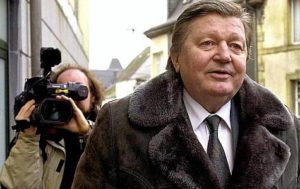
Michel Nihoul was convicted of human and drug trafficking.
In 2009, Wikileaks provided further information regarding the case via their publication of the "Dutroux Dossier."Belgian authorities later attempted - unsuccessfully - to force Wikileaks to remove the Belgian dossier. Threats to sue Wikileaks came amid the media firestorm in the wake of Wikileaks' publication of the Iraq War logs, and the revelation of U.S. military human rights abuses.
Wikileaks summarized the Dutroux case: "Dutroux was a figure in the European criminal underworld and the case had connections to other underworld figures, to police corruption and from there to Belgium political figures." This case then, is unique in having been documented twice over, first in a contorted legal record and secondarily by a publisher with a flawless record for accuracy.
Wikileaks' Dutroux dossier also shows large financial transactions, maps of numerous European countries, and the presence of international currencies including Morrocan and Saudi Arabian money. The dossier shows payments of hundreds of thousands of francs to Michelle Martin, Dutroux's then-wife, and to Dutroux's personal bank account. It appears to be a reasonable inference from these documents that Marc Dutroux and Michel Nihoul were not acting alone in their criminal enterprises. Much as in the lack of analysis of DNA material recovered from Dutroux's basement, the lack of investigation into Marc Dutroux's financial connections increased frustration towards an appallingly inefficient legal procedure.
This was especially glaring oversight in light of the fact that Marc Dutroux was as an electrician living on social security benefits during the time of the crimes, but nonetheless owned ten houses. The New York Times wrote on this point: "...After several of the disappearances, Mr. Dutroux paid large sums of money into several bank accounts...Within four years of being released early from jail, where he had served time for rape and kidnapping, Mr. Dutroux — whose only official income was a welfare check — was worth an estimated 6 million francs, suggesting to investigators that he was acting for others higher up in a pedophile and prostitution ring."
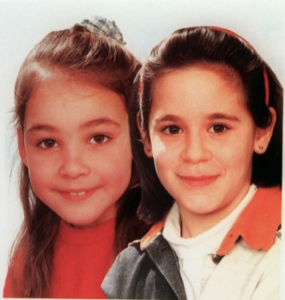
Melissa Russo, left, and Julie Lejeune, were among six girls abducted by Marc Dutroux.
The investigation was also mired by an unusually high number of deaths in relation to the scandal. These included the son of a judge, police officers, and even the chief prosecutor overseeing the case.
The Guardian reported: "Since [Dutroux's] arrest, twenty potential witnesses connected with the case have died in mysterious circumstances, fueling suspicions of a cover-up reaching the highest levels." The Guardian added that important evidence had also disappeared.
The New York Times reported on the death of Hubert Massa, who served as the chief prosecuting attorney in Liege, and was in charge of the investigation into the "alleged pedophile murders committed by Marc Dutroux. Massa was also the lead investigator into the 1991 gangland-style slaying of Andre Cools, the Socialist party boss in Wallonia. Massa's death during the Dutroux case was termed a "suicide" by his superior Anne Thily. The main suspect in the Cools case also committed suicide.
Revelations of corruption resulting from Cools' death led to the disgrace of Willy Claes, a Belgian Statesman and secretary-general of NATO. Claes resigned from his leadership position after he was found guilty of corruption. The witness in the Dutroux investigation known as X3 further identified Willy Claes as one of those present during alleged torture, sexual abuse and murder of children. The Washington Post also speculated that there may have been a connection between the Cools case and that of Dutroux.
The New York Times reported on the death of the son of a police officer involved with investigation into Dutroux: "Judge Poncelet's son, a police officer, was involved in another case in which Mr. Dutroux was implicated. He was investigating the trafficking of stolen cars in 1996 when he was shot and killed in an unsolved murder."
The Irish Times and other media noted strange deaths among witnesses tied to the Dutroux case, describing how Bruno Tagliaferro, a scrap merchant who planned to testify against Dutroux, was poisoned, and his wife was burned to death in her bed. A sex club owner associated with Nihoul was also shot to death.
Jean Van Peteghem was yet another death associated with the investigation; he had spoken to authorities regarding involvement with Marc Dutroux. According to European reports, he died when his moped crashed into a bus. Dutroux also admitted murdering an accomplice, Bernard Weinstein. The many deaths surrounding the Dutroux scandal fueled concerns that Dutroux was part of a larger pedophile network that had gone unpunished.
Despite these allegations, there were some who stood out as beacons of hope in the mind of the Belgian populace. Judge Connerotte, the original judge in the Dutroux investigation, was widely perceived as a hero in Belgium because his actions had resulted in the release of two girls, Sabine Dardenne, 12, and Laetitia Delhez, 14 from Dutroux's dungeon. The Telegraph reported Sabine had been chained by the neck for 79 days and raped repeatedly. Despite having saved Sabine and Laetitia, Connerotte was removed from the case by the Belgian Judiciary for what was labeled conflict of interest after he shared a meal at a fundraiser for the victim's families.
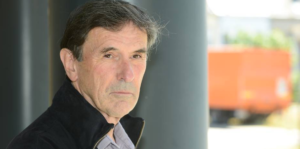
Judge Connerotte, was regarded as a hero for saving two of Dutroux's victims. Later removed from the case.
Statements made by the well-loved judge in the wake of his removal provided additional indications of deep corruption connected to the organized trafficking, rape and murder of children. Media reports described Connerotte's statements in court, where he said "high-level murder plots" had stopped his investigation into a "child-sex mafia."
Connerotte further described his belief that mafia groups had seized control of the "key institutions of the country." Connerotte discussed the information which was later published by Wikileaks: "The file talks of seizure of children, foreign trafficking, and perhaps even of cells... The sum of 150,000 francs [£2,500] was mentioned as the price for girls. I was struck by the richness of these documents."
That the well-liked judge responsible for the release of Dutroux's only surviving victims would make such explosive statements regarding the case, illustrates the seriousness of the corruption surrounding the scandal, and explains the degree to which the Belgian public was affected by such stark revelations of Dutroux's crimes as well as the procedural abuses which had allowed him to commit them with near impunity and which failed to investigate his alleged accomplices.
Adding to public frustration was the revelation that another Judge in the case, Van Espen, had personal ties to Michel Nihoul. Despite this clear conflict of interest, Van Espen did not resign from the case until his relationship with Nihoul was publicly revealed in 1998, years into the investigation. The Guardian reported that as a lawyer, Van Espen had represented Nihoul's wife. Even more alarmingly, Van Espen's sister was the godmother of Nihoul's child. Despite this, The Guardian wrote, Van Espen saw no conflict of interest, did not recuse himself, and was not removed from the case until the longstanding connections were made public. That Connerotte was removed while Van Espen had been allowed to remain on the case was yet another source of ire for the Belgian populace.

Sabine Dardenne
Image: Reuters
This corruption was yet again exposed when Mr. Verwilghen, the chairman of the parliamentary inquiry into the Dutroux case, reported attempts to stifle their investigation into how the case had been handled. Mr. Verwilghen was considered a highly respected individual when he served as chairman, eventually publishing a book which claimed that the commission's findings had been muzzled by political and judicial leaders to prevent the revelation of details which would have implicated the complicity of additional perpetrators.
That allegations of corruption and abuse made by the initial judge in the Dutroux case would be corroborated by the chair of the parliamentary inquiry into the botched case suggests to some extent the depth of corruption surrounding the investigation. The case was so deeply mishandled, that it was reported to have inspired a complete "crisis of public confidence in the Belgian government."
René Michaux, a police officer, was principally noted to have epitomized the mishandling of the case. Michaux had failed to properly analyze videotapes which were confiscated from Dutroux that would have revealed his involvement in rape and constructing cells in which the kidnapped girls were kept. Hundreds of the tapes were not processed, some were even returned to Dutroux.
<Michaux was additionally condemned in the eyes of the public for having ignored the sound of children screaming when he visited Dutroux's home. Belgian police admitted this inaction resulted in the death of two of Dutroux's victims. Despite such extreme incompetence, Marchaux received a promotion to the position of Police Commissioner before his death in 2009. Marchaux's promotion was viewed by many to have implied rewards for compliance in a deeply corrupt legal system that simultaneously punished those who acted behalf of victims, as had Judge Connerotte.
Corrupted allegations were further fueled by the words of Anne Thilly, the Prosecutor General of liege who claimed bodies recovered from Dutroux's property were too decomposed to perform DNA analysis. However, the BBC reported that: "...Autopsy states quite clearly that the bodies were not decomposed. Samples were taken. It is just that no one seems to know what has happened to the results.... Why... were the hairs which detectives gathered from the dungeon in Dutroux's cellar never sent for DNA analysis?" This blatantly corrupt or incompetent process increased the gall with with the case was perceived by the Belgian public.
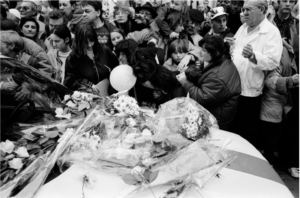
Numerous women, codenamed "X-Witnesses," spoke to investigators working on the Dutroux case, claiming to have suffered horrific abuses at the hands of a criminal network linked to Dutroux and Nihoul, which had abused children in order to blackmail members of the Belgian establishment. According to BBC, The X witnessed placed Nihoul and Dutroux at the scene of torture, rape and murder of multiple children along with other elite figures. Nihoul was also accused producing snuff films. The number of witnesses eventually reached to X9, according to a BBC Documentary on the case.
The New York Times also reported on the book "The X-Files: What Belgium Was Not Supposed to Know About the Dutroux Affair," which extensively documented the X-witness testimony. The New York Times wrote: "The book draws copiously from police files, transcriptions of the X-witnesses' evidence, the findings of a parliamentary commission and other sources. Even if the way the X-witnesses testified seemed irrational, the authors say, many of the facts they described stand up to scrutiny."
The first and most well-known victim to come forward was codenamed "X1," her real identity later revealed in the press as Regina Louf. The BBC described Louf's testimony: "It was big business - blackmail - there was a lot of money involved... sessions were secretly filmed without the clients' knowledge." The Guardian described Louf's haunting allegations:"This 'entertainment' was not just sex... It involved sadism, torture and even murder, and again she described the places, the victims and the ways they were killed. One of the regular organizers of these parties, she claimed, was the man she knew as 'Mich', Jean Michel Nihoul, 'a very cruel man. He abused children in a very sadistic way', she said. Also there, she said, was the young Dutroux.
The New York Times also noted: "[Louf spoke of] having been sold into prostitution by her grandmother and later introduced into a circle of orgies at which... she had seen young children tortured and murdered. The other X-witnesses, one of whom worked for the police, told similar stories of childhood abuse, and described hunts at which children were chased through woods with Dobermans. Mr. De Baets... had each of [Louf's] statements checked out, and discovered that she had inexplicably detailed knowledge of the unsolved murders of two young women in the 1980s that supported the thesis of a conspiracy."
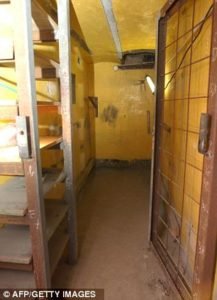
The Cells Discovered in Dutroux's Home.
Image: AP/Getty
As discussed by the New York Times, Louf's testimony was regarded as remarkably accurate, to the point that she was able to correctly describe the scene of an unsolved murder. The BBC reported Louf's detailed testimony had included details of names and locations where members of the establishment had engaged in violent orgies with children; Louf alleged that Michel Nihoul was a regular participant in events. Louf also claimed that children had been raped, tortured, and murdered during the fetid gatherings, with the crimes often filmed for blackmail purposes.
The Guardiandescribed Louf's accuracy: "At least one of the murders she described matched an unsolved case...What Louf had described was a macabre torture which had eventually killed a 15-year-old girl she knew as Chrissie. 'It was a sort of bondage,' she told me, 'so her legs and her hands and her throat were connected with the same rope, and so when she moved she strangled herself."
Further verifying the veracity of Louf's description, The Guardian wrote that the scene of the murder she claimed to have witnessed occurred in an underground mushroom farm. The report states that the son of the former owner of the location had stated: 'I have never met Regina Louf. All I know is that she could not have described the house as well as she did unless she'd been there... It would be impossible to invent it." Louf's struggle to speak out on the horrific abuses she claimed to have experienced and witnessed ultimately failed. Investigators who believed her testimony to be credible were removed from the investigation, and her real identity was leaked to the press.
After Louf's identity was made public, her reputation was systematically destroyed. The BBC wrote that after her identity became known, a government-owned TV station RTBF began a campaign "designed to prove that Dutroux was an "isolated pervert" kidnapping girls for himself, that there was no network, that Jean Michel Nihoul was innocent and Regina Louf was a liar." After this point, the public effectively gave up struggling to find real justice for Dutroux's victims. To protest systemic corruption was to be associated with insanity, and so outrage was morphed by shame into heavy silence.
The removal of Connerotte from the case served as a final outrage for the Belgian populace which provoked 300,000 citizens to take to the street in protest known as "The White March." Protesters were peaceful, wearing white in solidarity with the victims and in recognition of the alleged coverup protecting establishment figures from prosecution. Despite this, no progress was ever made in the investigation of crimes related to the Dutroux case, and calls for transparency went unanswered.
In the end, the only answer to the known and unknown victims of Dutroux was the same: a resounding silence.
Thank you, Elizabeth. There are very few journalists with the courage to take these subjects on. Thankfully, Steemit provides a permanent record. All power to you.
Thank you, that means a lot to hear. I won't stop covering stories like this.
Curated for #informationwar (by @openparadigm)

Relevance: Pedogate
Our Purpose
Thank you!
https://www.scribd.com/document/254670719/Gang-Dutroux-Suisse
Appreciated!
This is one of the most important articles I've read dealing with this topic. It shows and proves the lengths to which the sadistic perverts in control of government will go to cover up the truth. I have so much more to say, but should refrain as my anger towards those helping to cover up the truth would make me write things I would regret. Thanks for this, it's good to know there are people who care and have not forgotten.
Thank you! It's an awful topic, but one backed by evidence and for that reason it cannot and should not be forgotten.
Exactly. These topics are awful, but they need to be brought to light. This case is a prime example that could be used to wake people up to what is still going on. Thank you.
How can we stop the trafficking and the crimes and corruption in governments?
I don't think there is just one way...we all have certain abilities/time/resources and if we go inside ourselves and think about how we could help change it and then inform others? We have to stop giving them so much power over us. I think this was a big wake-up call for the Belgians, but also, people are afraid to speak up. It's the fear that keeps those wheels of corruption and abuse turning.
We vote so much with our money and we can support Hollywood less and we can support Big Pharma less or maybe much more and it takes one small choice at a time as we make transitions from certain habits and lifestyle patterns and they rely on our money more than we think. Speaking up like you said helps too and we can lead by example by making small changes at first and by simply telling people. For me, I have a garden and I eat garlic each day and I use Ubuntu instead of Apple or Microsoft.
Fantastic coverage. I thought - as a non-conform Belgian - i knew most of it but this opened my eyes again, it is fucking terrible.
There is more to discover on the involvement of prominent Belgian figures in the case of the "roze balletten", another similar case.
Much love, thanks.
I will look into that, thank you!
I remember this case well and it makes me sad until today for all the lies and corruption as well the still unknown in all of this. Thank you for hanging on. The day of the truth will come for sure.
Thank you! Am glad it hasn't been totally forgotten.
No matter how much I learn about the atrocities being committed by the powers that shouldn't be, I am still constantly shocked. Resteeming in hopes that more people will be woken up by this article. Keep fighting the good fight.
Thank you very much. Will do and same to you.
Evil everywhere..... :-(
Thanx for the report!!
fabulous one. that's pretty cool to know. love to read it
Lov